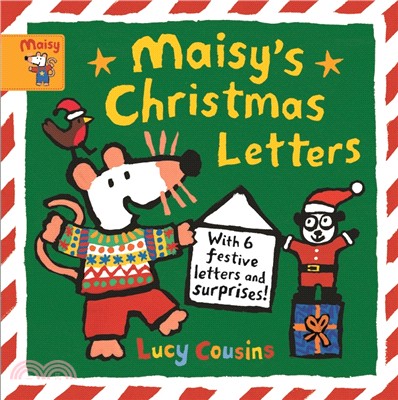How To Reach & Teach English Language Learners Practical Strategies To Ensure Success
商品資訊
系列名:J-B Ed: Reach and Teach
ISBN13:9780470767610
出版社:John Wiley & Sons Inc
作者:Syrja
出版日:2011/08/10
裝訂/頁數:平裝/272頁
規格:28.6cm*21.0cm*1.3cm (高/寬/厚)
商品簡介
This book provides practical strategies and tools for assessing and teaching even the most hard to reach English language learners across the content areas. Syrja offers educators the latest information on working with ELLs (including using formative assessments) and provides a wealth of classroom-tested models and measures. These tools have proven to be effective with ESL students at all levels, including Long Term English Learners (LTELs). Throughout the book, the author shares powerful research-based strategies and clearly illustrates how they should be implemented in the classroom for maximum impact.
- Filled with proven ideas and easy-to-implement tips for teaching ELLs
- Designed to be a practical ELL/ESL resource for classroom teachers
- Syrja, a former teacher and ESL student, is a noted expert in English language learning and a Professional Development Associate with the Leadership and Learning Center
This value-packed guide offers educators accessible and research-based classroom strategies for reaching and teaching ELLs.
作者簡介
Rachel Carrillo Syrja, M.Ed., is a professional development associate with The Leadership and Learning Center. She has over eighteen years of experience in education ranging from classroom teacher and coach to professional development specialist. She has spent much of her career specializing in instruction for English language learners.
目次
Acknowledgments.
Preface.
Introduction.
Where Are the Answers?
Using This Resource.
Part One: English Language Learners.
Chapter 1: The Current State of Education for English Language Learners.
What Works with ELLs.
Is It Only About Degree of Implementation?
How Long It Takes to Acquire English.
The New Wave of Immigration.
A Growing ELL Population.
Characteristics of the Current ELL Population.
Chapter 2: The Case for Urgency.
The Impact of the No Child Left Behind Act.
State Concentrations of School-Age Children of Immigrants.
Responding to the Challenges.
Chapter 3: Long-Term English Language Learners.
Chapter 4: How Children Acquire Language.
Part One Resources.
What Works with Long-Term English Learners.
Discussion Questions.
Part Two: Getting Ready to Teach.
Chapter 5: English Language Learner Instructional Programs.
Some Issues with the Home Language Survey.
English Language Learner Program Options.
Bilingual Programs.
Dual-Immersion Programs.
English-Immersion Programs.
English Mainstream.
Support Programs for ELLs.
English as a Second Language Instruction.
Sheltered Instruction.
Total Physical Response.
Conclusion.
Chapter 6: Levels of Language Acquisition.
How the Four Language Domains Develop in ELLs.
Common Misconceptions.
Conclusion.
Chapter 7: Assessing English Language Learners.
Formative and Summative Assessments.
The Assessment Process.
Monitoring Language Acquisition.
Complexities of Monitoring Language Acquisition.
Assessment in the ESL Classroom.
Assessment in the Mainstream Classroom.
Planning Differentiated Assessments.
A Word of Caution to Mainstream Teachers.
Chapter 8: Grading English Language Learners.
Impact of an Inaccurate Grading System on Students and Parents.
What About the Teacher’s Beliefs?
How to Solve the Grading Issues.
Chapter 9: Identifying Language Acquisition Levels.
Creating Language Proficiency Assessments.
Using Assessment Results.
Part Two Resources.
Survey: Auditing Your English Language Learner Program.
Sample Supplemental Grading.
Report.
English Learner Profile Sheet.
Using the English Learner Profile Sheet.
Part Two Discussion Questions.
Part Three: Reaching English Language Learners.
Chapter 10: Lowering the Affective Filter.
Establishing a Low Affective Filter.
Lowering the Affective Filter.
Ensuring the Environment Is Conducive.
Strategies for Lowering the Affective Filter.
A Peek into Two Classrooms.
Chapter 11: Connecting with Families of English Language Learners.
Where to Begin.
Making Parents and Families Feel Welcome.
Educational Opportunities for Parents.
Chapter 12: The Importance of Cultural Connections.
Funds of Knowledge.
Connecting with Families.
Part Three Resources.
Planning Resources for Family Nights.
Sample Parent Letter.
Parent Education Planning Checklist.
Family Night Planning Checklist.
Family Reading Night Parent Resources for Elementary Schools.
Before-Reading Strategies.
During-Reading Strategies.
After-Reading Strategies.
Family Night Parent Resources for Secondary School.
Discussion Questions.
Part Four: Teaching English Language Learners.
Chapter 13: What We Do Matters: The Importance of High-Quality Instruction.
Action Research to Identify High-Impact Strategies.
Conducting Action Research.
Chapter 14: Using the Four Domains of Language in Teaching.
The Domains in Detail.
Listening.
Speaking.
Reading.
Writing.
Engaging Students Using the Four Domains of Language.
The Fifth Domain: Thinking.
Chapter 15: Making Content Comprehensible.
Chapter 16: Total Physical Response.
Chapter 17: Sheltered Instruction.
Examples of Sheltered Instruction.
Graphic Organizers and Concept Maps.
Schema Building.
Word Study.
Sheltered Instruction Strategies.
Conclusion.
Chapter 18: English as a Second Language.
How English Learners Are Placed in ESL Classes.
ESL Programs.
ESL Curriculum Materials.
Content-Based Instruction for ESL.
Content–Driven ESL.
Content-Based ESL.
Part Four Resources.
Assessing the Effectiveness of Our ESL Program.
Part Five: Teaching Strategies Across the Content Areas.
Chapter 19: High-Impact Strategies for Teaching the Content Areas.
Chapter 20: Strategies for Reading.
Approaches to Reading for Elementary and Secondary English Learners.
Assessing Preexisting Reading Ability.
Comprehension: The Key to Accessing Content.
Background Knowledge.
The Strategy: Making Connections to Background Knowledge.
The Strategy: Making Connections—Text to Text, Text to Self, Text to World.
Motivation and Attention.
The Strategy: Teaching Questioning.
The Strategy: Teaching Students How to Predict.
The Strategy: Tea Party.
Comprehension Strategies.
The Strategy: Reciprocal Teaching.
The Strategy: Creating Mental Images Through.
Visualization.
The Strategy: List-Group-Label.
Word Recognition.
Fluency.
The Strategy: Repeated Reading.
The Strategy: Vocabulary Development.
The Strategy: Key Vocabulary Prediction.
The Strategy: Word Maps.
Wide Reading: The Importance of Independent Reading.
Strategy: Implementing Independent Reading.
Chapter 21: Strategies for Writing.
A Word About Grammar and Usage.
Writing in the Content Areas.
The Strategy: Implementing Writing Across the Curriculum.
The Strategy: Connecting Reading and Writing Through Content.
The Strategy: Developing Voice.
The Strategy: RAFT (Role, Audience, Format, Topic) Writing.
Chapter 22: Strategies for Math.
How to Help English Learners Achieve in Math.
Difficulties That English Learners Face in Math.
Strategies for Math.
Preinstruction Strategies.
The Strategy: Previewing the Lesson.
The Strategy: Vocabulary Instruction for Multiple-Meaning Words.
During-Instruction Strategies.
The Strategy: Group Solutions.
Other Strategies.
Postinstruction Strategies.
The Strategy: Paired Summarizing.
Chapter 23: Strategies for Other Content Areas
Teaching Text Features.
The Strategy: Prereading Text.
The Strategy: Modified KWL.
Differentiation for Levels 1 and 2 English Learners.
The Strategy: REAP.
Part Five Resources.
Elementary Interest Survey.
Form 5R.2 Secondary Student Interest Survey.
Discussion Questions.
Part Six: Putting These Practices to Work.
Chapter 24: How Can I Make These Practices Work for My English Learners?
The Strategy: Microteaching.
The Strategy in Action.
Part Six Resources.
Microteaching Checklist.
Discussion Questions.
Notes.
Definitions and Key Terminology.
References.
Index.
主題書展
更多書展今日66折
您曾經瀏覽過的商品
購物須知
外文書商品之書封,為出版社提供之樣本。實際出貨商品,以出版社所提供之現有版本為主。部份書籍,因出版社供應狀況特殊,匯率將依實際狀況做調整。
無庫存之商品,在您完成訂單程序之後,將以空運的方式為你下單調貨。為了縮短等待的時間,建議您將外文書與其他商品分開下單,以獲得最快的取貨速度,平均調貨時間為1~2個月。
為了保護您的權益,「三民網路書店」提供會員七日商品鑑賞期(收到商品為起始日)。
若要辦理退貨,請在商品鑑賞期內寄回,且商品必須是全新狀態與完整包裝(商品、附件、發票、隨貨贈品等)否則恕不接受退貨。
























